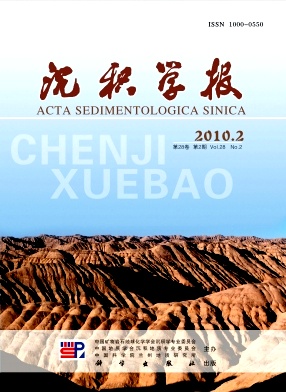Geochemical Research and Genesis of Dolostones with Different Crystal Characteristics Occurring in the Upper Cambrian Centeral Area of Tarim Basin
- Received Date: 1900-01-01
- Rev Recd Date: 1900-01-01
- Publish Date: 2010-04-10
-
Key words:
- Tarim Basin
Abstract: In Tarim basin occurs a large amount of dolostone strata, in which contains plenty of good reservoir. In this paper, petrology and geochemistry methods were attempted to reveal the genesis of dolostones with different crystal characteristics and the subjects were the dolostones of the upper Cambrian in the centeral area of Tarim basin. According to the petrology, the studied dolostones can be divided into “Cloudy center with bright rim” type of euhedral dolomite (CBED),“clean and light” type of euhedral dolomite(CLED) and “dirty section” type of euhedral/subhedral dolomite (DED or DSD). The geochmical results show that the Mg/Ca of CBED,DSD and DED vary in 0.760.93, of the three types, the Mg/Ca value of DSD is the highest, which indicates DSD might have been on the highest evolving stage; There is a considerable coincidence between CBED and CLED, with Ca enriched in rim and Mg enriched in core, which indicates the meteoric water had taken part in at the late crystal stage. The order degrees of CBED, DED and DSD are 0.51, 0.6, 0.69 respectively, which suggests that the crystal speed of CBED is fast and the DSD might have been affected by thermal alternation resulting in the high order degree and high evolving stage. The Rb, Th, Ti enriched characteristics and the right inclined PAASnomalized REE patterns suggest that the CBED, DED and DSD might have derived Mg from evaporated seawater. The δ13C and δ18O values of CBED, DED and DSD range in -2.5‰-1.0‰ and -8.3‰ -5.4‰ respectively, and the δ18O values of CBED are lower than those of DED or DSD, which coincides with the joining of the meteoric water. The 87Sr/86Sr varies in 0.708 8350.709 204, coincident with paleoseawater. Therefore, conclusions were reached: 1) the crystallization of CBED can be divided into two stage, center stage and rim stage, of which the dolomitization fluid are evaporated seawater and mixed seawater and meteoric water, respectively; 2) CLED is results of mixed water dolomitization, however the different proportion of seawater and meteoric water lead to different composition of dolomite in core and rim; 3) DED and DSD are results of dolomitization by evaporated seawater, of which DSD had suffered thermal alternation, which may result in the higher order degree, higher 87Sr/86Sr values and higher evolving stage.
| Citation: | CHEN Yongquan. Geochemical Research and Genesis of Dolostones with Different Crystal Characteristics Occurring in the Upper Cambrian Centeral Area of Tarim Basin[J]. Acta Sedimentologica Sinica, 2010, 28(2): 209-218. |






 DownLoad:
DownLoad: